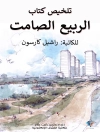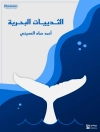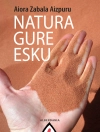There is no escaping the fact that theisland biogeography of the North Atlantic Regionissingularlypeculiar. Sitting inthenorth of the Atlantic Ocean, these islands have been subjected to largescale shifts in climate over the last few million years, unlike the other island groups further south which were likely more buffered from the vicissitudes of Quaternary climate changes.Uniquely for a group of islands there is only one documented extinctionin the North Atlantic (the Great Auk), and those in the insects are local events relating to species that are distributed throughout the Palaearctic region. Over half the insect species in Iceland and Greenland are introduced. The faunas, excluding Greenland, arepredominantly of Palaearcticorigin and have close affinities with the faunas of Scandinavia and the British Isles and.These unique physical and biological characteristics have interested biologists and biogeographers forcenturies.
The key debates concerningthebiogeographyof the North Atlantic islandsstillrumble on:Do the biota reflect cryptic refugiaor otherwise, or tabula rasa and recolonization?How important werehuman communities in shaping the existing biota and biogeographical patterns?Throw into this mixcurrent concerns over global warming, and we can now ask, how resilient is the biota to change, either natural or anthropogenic? This volume draws together a range of researchers with longstanding research interests in the region, from diverseacademicbackgrounds, to evaluate some of these questions.
表中的内容
List of Contributors vii
Introduction xi
Jon P. Sadler and Eva Panagiotakopulu
Section I: Remote Origins 1
1 The Opening of the North Atlantic 3
Brian G. J. Upton
2 Cenozoic Vegetation and Phytogeography of the Sub-arctic North Atlantic 29
Fridgeir Grímsson, Thomas Denk and Reinhard Zetter
3 Interglacial Biotas from the North Atlantic Islands 51
Ole Bennike and Jens Böcher
Section II: Origins of the Present Biota 83
4 Origin and Dispersal of the North Atlantic Vascular Plant Floras 85
Christian Brochmann and Inger G. Alsos
5 The Aquatic Fauna of the North Atlantic Islands with Emphasis on Iceland 103
Gísli Már Gíslason
6 The Vascular Floras of High-Latitude Islands with Special Reference to Iceland 113
Thóra Ellen Thórhallsdóttir
7 Quaternary Vertebrates from the North Atlantic Islands 147
Ole Bennike and Bernd Wagner
8 North Atlantic Insect Faunas, Fossils and Pitfalls 161
Eva Panagiotakopulu
Section III: Human Impact 185
9 Landnám and the North Atlantic Flora 187
Kevin J. Edwards, Egill Erlendsson and J. Edward Schofield
10 Origin of the Northeast Atlantic Islands Bird Fauna: Scenarios of Ecosystem Development 215
Aevar Petersen and Bergur Olsen
11 Human Impact on North Atlantic Biota: Farming and Farm Animals, Fishing, Sealing and Whaling 251
Ingrid Mainland and Jennifer Harland
Section IV: Conservation in a Warming World 273
12 A Fleet of Silver: Local Knowledge Perceptions of Sea Ice from Iceland and Labrador/Nunatsiavut 275
Astrid E. J. Ogilvie, Brian T. Hill and Gaston R. Demarée
13 Biodiversity Conservation in the Faroe Islands Under Changing Climate and Land Use 293
Anna Maria Fosaa
14 Biodiversity Conservation in Iceland Under Changing Climate 303
Erlingur Hauksson
15 The Natural Environment and Its Biodiversity in Greenland During the Present Climate Change 339
Ib Johnsen and Henning Heide-Jørgensen
Index 359
关于作者
About the Editors
Eva Panagiotakopulu is a palaeoecologist who specialises on Quaternary fossil insects and has worked on biogeography, climate change and human impact from sites ranging from the North Atlantic to North Africa. She has a particular interest in islands and human impact.
Jon P. Sadler is a biogeographer and ecologist whose research focuses on species population and assemblage dynamics in animals (sometimes plants). His work is
highly interdisciplinary, bisecting biogeography, ecology, urban design, riparian
management and island biogeography.












